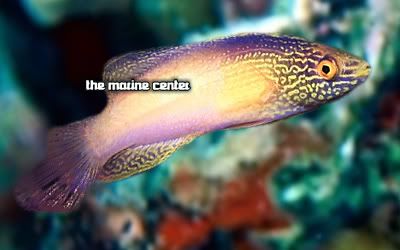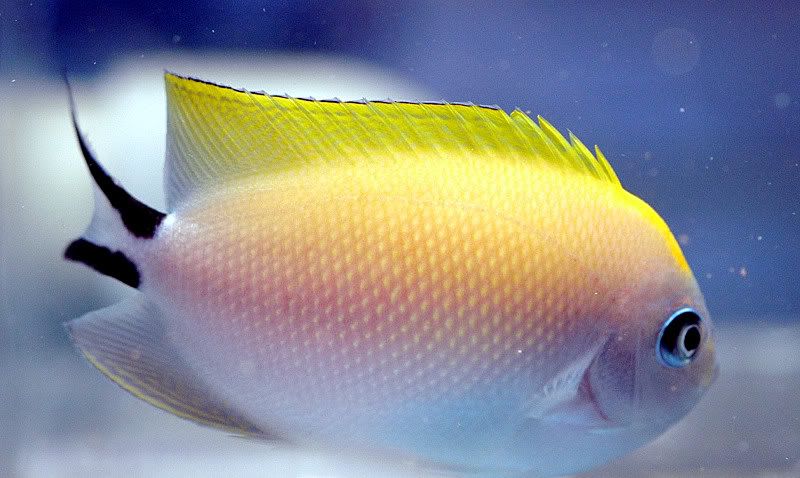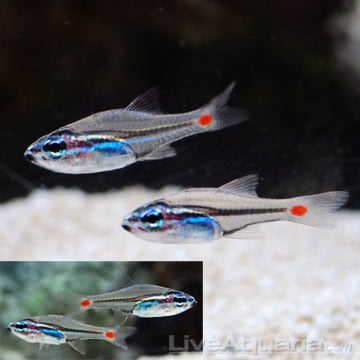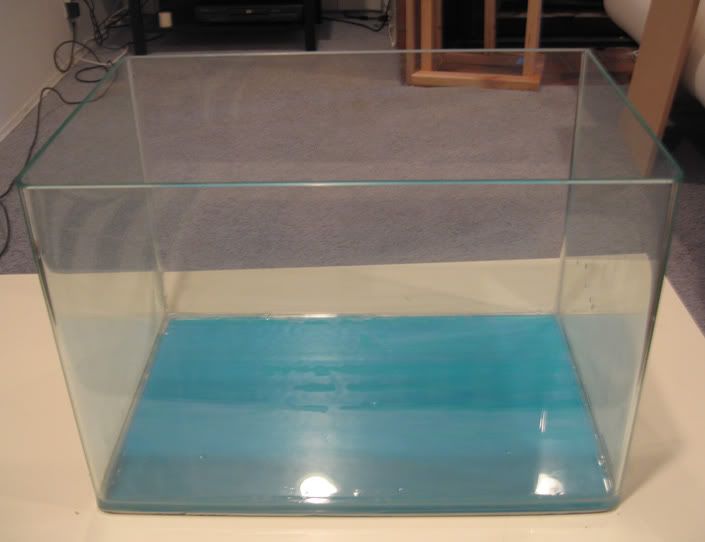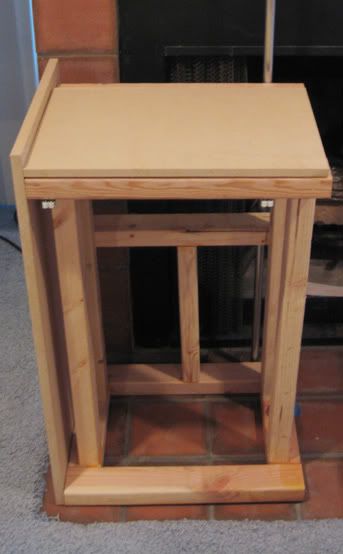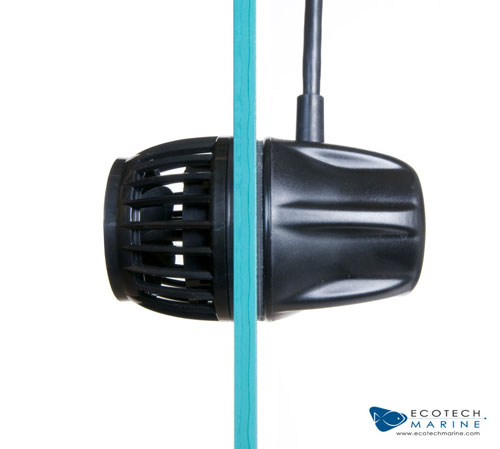Author: Frank M. Greco
Title: How to Quarantine Your Fresh and Salt Water Fish, and Invertebrates
Reposted for information purpose. (external link)
In fact, all you'll need is listed here:
-10 gallon tank (or larger if need be)
- cover, preferably with light
- 2 or 3 pieces of 6" long 2" PVC for hiding places
- air pump
- heater and thermometer
- biologically active sponge filter
- net
- crushed oyster shell or calcareous gravel
- ammonia test kit (fresh and salt water)
- AmQuel or similar product
- nitrite test kit (freshwater)
- antibacterial medicated food
- anti-parasitic medicated food
- citrated copper (for marine fish)
- copper test kit (for marine fish)
- malachite green (for freshwater fish)
STARTING OUT
How do you start? Quite simple. You will be setting up your tank the same way you'd set up any tank, with the exception of painting the OUTSIDE bottom of the tank black or in some way blocking the bottom of the tank (note that NO substrate is used in the quarantine tank, hence the need to black out the bottom). This will give the fish the illusion of a solid bottom, and place them more at ease (with fish, as with humans, psychological well-being goes a long way to aiding with physiological well-being).
Next, place the tank on a nice sturdy, level surface (a stand made for this purpose, preferably), and fill it with 10 gallons of water from your already established aquarium. Add the heater, PVC pipe pieces, a small amount (~a handful) of crushed oyster shell or calcareous gravel in a mesh bag (buffering) and the biologically active sponge filter, and...VOILA!...a quarantine tank is born!
"Hey!", you might say, "Where do I get a biologically active sponge filter?" There are several options here. Perhaps your local dealer can sell you an active sponge filter. (A note to dealers here: since it is a good idea to have auxiliary aeration in your systems, in any event, why not utilize sponge filters? This way, when your customer needs an active sponge filter, you have plenty on hand to sell). Failing this, perhaps a fellow hobbyist can help you out. However, the easiest thing to do, in my opinion, is to always have a sponge filter on hand. This is easily accomplished by placing a working sponge filter (or two) in your sump or directly in your tank (hidden behind some decorations so that it is not visible when viewing the tank). After 4 to 6 weeks you will have an active sponge filter! After the quarantine period is over, all you need do is remove the sponge filter from the quarantine tank, rinse it under hot water, and place it back into your tank/sump for bacterial re-colonization. Really, what could be simpler?
O.K., now the tank is up and running. All environmental parameters check out (so far). What next? You'll want to add the fish, of course. Follow whatever acclimation procedures you normally follow (which, in my case, consists of netting the fish from the bag to the tank while yelling "ACCLIMATE!"). NEVER dump bag water into your quarantine or main tank. Always net the fish from the bag. Allow the fish 24 hours to settle in before starting treatment.
MARINE FISH QUARANTINE
If you have a marine system, the process is a bit more complex.
First, the acclimation of the new fish is the same, but you want to give the new arrival at least 24 hours to recuperate from bring moved before you begin medicating. If the animal does not begin to eat within 24 hours, hold off treatment until it does begin to take food.
Next, you will want to add enough citrated copper to bring the level up to 0.15 PPM (you can really go as high as 0.20 PPM, but no higher, please). I know many of you use heavily chelated (or bonded) coppers, but I advise against their use. First off, in order for copper to be truly effective, it must be in its ionic state. Heavily chelated coppers, by definition, are not in that state, and so are less than useful. The fact that, in my experience, crabs and shrimp can live in systems treated with heavily chelated copper attests to its ineffectiveness in most cases. (Try that in a system treated with an ionic copper. The inverts do not live very long). Secondly, the level produced by some chelated coppers may be far higher than is actually needed to control the disease organism (which should also tell you something. At as high a dose as some of these chelated coppers produce, the fish should be dead). This higher-than-needed dose is actually detrimental to the fish in the long run in several other ways: gill degeneration, liver shutdown, anemia, compromised immune system..the list goes on. There is absolutely NO need to subject the fish to levels far above what is needed to treat the condition.
How do you know how much citrated copper is in your system? You'll need to get a good test kit in order to measure the level. Personally I advise the powdered reagent kits over tablet or dipstick based kits, as they are far more accurate. (I have checked many a test it against atomic absorption readings, and many are consistently are off, especially when testing marine water).
In the beginning, you may find it difficult to maintain a 0.15 PPM level due to the calcareous material in the system. This is to be expected as the carbonate reacts with the copper, forming copper carbonate. At first, you will need to check the level twice a day, and add copper as needed to maintain the 0.15 PPM level. Once you get two consecutive readings of 0.15 PPM, you can consider that day one, and you can begin monitoring the level once a day, adding copper as needed.
You will want to continue this regime for 14 days. During this treatment period, you will also want to feed the fish an antibacterial medicated food. Doing so does help the fish fight off systemic bacterial problems since the copper treatment does tend to compromise the immune system to a degree. After 14 days, do a 50% water change (to bring the copper level down), and wait 24 hours after that before adding the fish to your established tank.
As with freshwater fishes, if obvious signs of any other diseases show up, treat with the correct proprietary medication for the appropriate period of time. For copper sensitive species, you can use malachite green at 0.10 PPM (which ends up being 8 drops of a 0.75% solution per 10 gallons). Treat every other day for three treatments, wait two days, and repeat. As always, monitor water quality and take appropriate action if it degrades. Please note that this treatment is NOT as effective as copper, and will not result in the same kill rate of parasites. There are other non-copper based medications that can be used (such as chloroquine phosphate, pyrimethamine,quinacrine and other proprietary medications. In my experiences with them, most are FAR less effective than is copper, and should be used only as a last resort. Also note that I have not mentioned the use of formalin as a viable treatment. There are MANY chemotherapeutic mixtures that contain formalin. However, IMO and IME, formalin should NEVER be used as part of a mixture. If one is to use it (and there is no reason why one should), it should be dosed separately, and at its correct therapeutic dose. The fact that, if dosed incorrectly, you can kill your fish quickly and that it can be injurious if gotten into ones eyes is reason enough to stay away from formalin.
NOW WHAT? AFTER QUARANTINE
O.K., your fish are through quarantine, and there are no new fish on the horizon. Now what? Simply break down the tank. Rinse everything (except the sponge filter) out with warm (NOT HOT OR BOILING) water into which a little bit of bleach has been added. (Please wear eye protection and gloves when using bleach in this manner. Also realize that bleach will eat some fabrics, and cause color loss in fabrics not intended for bleaching). The sponge filter should be rinsed in HOT water, with no exposure to bleach (some sponge material used in sponge filters reacts poorly to bleaching). Allow everything to dry, and put it away until it is needed again.
So you see, setting up and using a quarantine tank is not difficult or complicated. Remember, it is better to control a disease in a smaller tank, treating beforehand, than it is to treat in a large system. A little preventative medicine is your best bet.


